
"The human face is really like one of those Oriental gods : a whole group of faces juxtaposed on different planes -- it is impossible to see them all."
- Marcel Proust
Marcel was a French novelist, essayist, and critic. He is known by many for his REMEMBRANCE OF THINGS PAST. His was a life of hardships, ill health, and yearnings for a family's love lost.
That particular quote was brought to mind in a email conversation I had with Vicki Rocho of RAMBLES & RANDOMNESS
http://missvspeaks.blogspot.com/
I was writing that non-fiction books on psychology like the one I was reading, SURVIVAL OF THE PRETTIEST, helped me in becoming a better writer. It is crucial that we as writers be discerning in how we humans relate to one another and why.
Our scenes must strike the reader as natural. The way our characters interact must resound with the ring of life as it is -- not as we wish it to be. Books like SURVIVAL OF THE PRETTIEST can help us see the multi-layers of human interactions.
In riveting style, Etcoff, a psychologist at Harvard Medical School, demolishes the belief that beauty is a cultural construct, arguing instead "that beauty is a universal part of human experience, and that it provokes pleasure, rivets attention, and impels actions that help ensure the survival of our genes."
By drawing widely from anthropological, psychological, biological and archeological literature, Etcoff discerns surprising similarities in the ways humans have perceived and responded to beauty across diverse cultures throughout the millennia.
For example, cross-cultural research comparing two isolated Indian tribes in Venezuela and Paraguay to people in three Western cultures demonstrated a remarkable similarity in what is considered beautiful. And evidence that red pigments were used as lipstick as long ago as 5000 B.C. suggests that media images are not the sole reason that "in the United States more money is spent on beauty than on education or social services."
The most important message in this book is that we cannot ignore our evolutionary past when attempting to understand our current behavior, even as we should recognize that we need not be slaves to our genes. Topics as wide-ranging as penis- or breast-enlargement surgery and the basics of haute couture are treated with wit and insight.
And Amazon sells a used hardcover for $4. How cool is that?
http://www.amazon.com/gp/product/0385479425/ref=kinw_rke_rti_1
Another indispensible psychology text for me as a student of human interaction, body language, and as a writer is EYE TO EYE, HOW PEOPLE INTERACT. It is truly an awesome aid to any writer of human interactions. It is loaded with color photographs with detailed summations of what is going on.
The observations of 26 British and American psychologists are combined in words and pictures "to identify precisely what it means to be a social animal."
A varied format blends text, headlines, boxed sidebars, diagrams, photographs and extended captions in a graphic overview of innate and cultural human communication.
The book analyzes how facial expression, eye contact, touch, gesture, appearance and comportment function in such attitudes as shyness, enthusiasm, territorial awareness, dominance, rivalry, aggression and so on in minor acquaintance, friendship, group activity, romance, sexual attraction, family relationships and career contacts as well as the possible effect of these on individual health, self-esteem, success or failure.
The clean layout and a wealth of charts and graphs make this volume an easy resource for YAs to use for research in psychology, health, or sociology classes. Bountiful color photographs illustrate this enjoyable, comprehensive volume. It's also an excellent book for browsers.
And on Amazon you can get a used paperback for a penny! Now that is really cool. But I would opt for the used hardback (it is oversized like a coffee table book) at $6. But I will give the link for the penny edition. I know money's tight these days :
http://www.amazon.com/Eye-How-People-Interact/dp/0881623717/ref=sr_1_1?ie=UTF8&s=books&qid=1275022476&sr=1-1
In 30 seconds you and all your friends will be pulled into it. It will be an invaluable aid in writing the interactions of your characters. Trust me. It will be a penny well spent. Or six dollars.
And speaking of being pulled in, that's what you're aiming at with queries :
Pulling in the agent. Making her/him pause in his whittling down the slush pile. Having her stop the mantra of "reject, reject, reject" to go, "Oh, here's a maybe."
How?
That is the question as Hamlet would say. Brevity {you knew that was coming, didn't you?} and broad strokes.
Hook. {If the world were all vampires, what would they drink?}
{Research what high-sale book this agent has handled that is like yours (don't cheat -- it has to be like yours -- or the agent will feel cheated)}
Mention how your book is cut from the same cloth as that book -- that will slow the reject mantra down. She made money from that particular book. She could possibly make money from yours.
3 stirring sentences boiling down your plot to the basics. At this point, the agent is only considering your query in the broadest sort of way. She is asking herself, "Do I want to see more?" Intrigue her enough to nod yes.
{Ever ask, "How are you?" to an acquaintence and get a three hour, detailed painful answer?} Don't be that in your query. The most effective monster in the movies is the one of whom you only see broad flashes.
Be a bad reporter : don't name names. It jars the agent to have to stop and mentally go, "How the h___ do you pronounce Sidhe de la Muerte?" The agent is thinking speed and ease of digesting your query.
Give the agent verbal indigestion at your peril. No names. Usually it is unnecessary. Hero. Love interest. Enemy. Arena of conflict.
Never trip your agent's attention. Highlight in broad strokes. Don't spotlight in numerous details.
- Marcel Proust
Marcel was a French novelist, essayist, and critic. He is known by many for his REMEMBRANCE OF THINGS PAST. His was a life of hardships, ill health, and yearnings for a family's love lost.
That particular quote was brought to mind in a email conversation I had with Vicki Rocho of RAMBLES & RANDOMNESS
http://missvspeaks.blogspot.com/
I was writing that non-fiction books on psychology like the one I was reading, SURVIVAL OF THE PRETTIEST, helped me in becoming a better writer. It is crucial that we as writers be discerning in how we humans relate to one another and why.
Our scenes must strike the reader as natural. The way our characters interact must resound with the ring of life as it is -- not as we wish it to be. Books like SURVIVAL OF THE PRETTIEST can help us see the multi-layers of human interactions.
In riveting style, Etcoff, a psychologist at Harvard Medical School, demolishes the belief that beauty is a cultural construct, arguing instead "that beauty is a universal part of human experience, and that it provokes pleasure, rivets attention, and impels actions that help ensure the survival of our genes."
By drawing widely from anthropological, psychological, biological and archeological literature, Etcoff discerns surprising similarities in the ways humans have perceived and responded to beauty across diverse cultures throughout the millennia.
For example, cross-cultural research comparing two isolated Indian tribes in Venezuela and Paraguay to people in three Western cultures demonstrated a remarkable similarity in what is considered beautiful. And evidence that red pigments were used as lipstick as long ago as 5000 B.C. suggests that media images are not the sole reason that "in the United States more money is spent on beauty than on education or social services."
The most important message in this book is that we cannot ignore our evolutionary past when attempting to understand our current behavior, even as we should recognize that we need not be slaves to our genes. Topics as wide-ranging as penis- or breast-enlargement surgery and the basics of haute couture are treated with wit and insight.
And Amazon sells a used hardcover for $4. How cool is that?
http://www.amazon.com/gp/product/0385479425/ref=kinw_rke_rti_1
Another indispensible psychology text for me as a student of human interaction, body language, and as a writer is EYE TO EYE, HOW PEOPLE INTERACT. It is truly an awesome aid to any writer of human interactions. It is loaded with color photographs with detailed summations of what is going on.
The observations of 26 British and American psychologists are combined in words and pictures "to identify precisely what it means to be a social animal."
A varied format blends text, headlines, boxed sidebars, diagrams, photographs and extended captions in a graphic overview of innate and cultural human communication.
The book analyzes how facial expression, eye contact, touch, gesture, appearance and comportment function in such attitudes as shyness, enthusiasm, territorial awareness, dominance, rivalry, aggression and so on in minor acquaintance, friendship, group activity, romance, sexual attraction, family relationships and career contacts as well as the possible effect of these on individual health, self-esteem, success or failure.
The clean layout and a wealth of charts and graphs make this volume an easy resource for YAs to use for research in psychology, health, or sociology classes. Bountiful color photographs illustrate this enjoyable, comprehensive volume. It's also an excellent book for browsers.
And on Amazon you can get a used paperback for a penny! Now that is really cool. But I would opt for the used hardback (it is oversized like a coffee table book) at $6. But I will give the link for the penny edition. I know money's tight these days :
http://www.amazon.com/Eye-How-People-Interact/dp/0881623717/ref=sr_1_1?ie=UTF8&s=books&qid=1275022476&sr=1-1
In 30 seconds you and all your friends will be pulled into it. It will be an invaluable aid in writing the interactions of your characters. Trust me. It will be a penny well spent. Or six dollars.
And speaking of being pulled in, that's what you're aiming at with queries :
Pulling in the agent. Making her/him pause in his whittling down the slush pile. Having her stop the mantra of "reject, reject, reject" to go, "Oh, here's a maybe."
How?
That is the question as Hamlet would say. Brevity {you knew that was coming, didn't you?} and broad strokes.
Hook. {If the world were all vampires, what would they drink?}
{Research what high-sale book this agent has handled that is like yours (don't cheat -- it has to be like yours -- or the agent will feel cheated)}
Mention how your book is cut from the same cloth as that book -- that will slow the reject mantra down. She made money from that particular book. She could possibly make money from yours.
3 stirring sentences boiling down your plot to the basics. At this point, the agent is only considering your query in the broadest sort of way. She is asking herself, "Do I want to see more?" Intrigue her enough to nod yes.
{Ever ask, "How are you?" to an acquaintence and get a three hour, detailed painful answer?} Don't be that in your query. The most effective monster in the movies is the one of whom you only see broad flashes.
Be a bad reporter : don't name names. It jars the agent to have to stop and mentally go, "How the h___ do you pronounce Sidhe de la Muerte?" The agent is thinking speed and ease of digesting your query.
Give the agent verbal indigestion at your peril. No names. Usually it is unnecessary. Hero. Love interest. Enemy. Arena of conflict.
Never trip your agent's attention. Highlight in broad strokes. Don't spotlight in numerous details.
"The man with death in his veins is the reluctant champion of life in post-Katrina New Orleans."
No sub-plots. Your agent will probably make her initial reject at the genre alone. "I don't do military history."
No sub-plots. Your agent will probably make her initial reject at the genre alone. "I don't do military history."
I do the housekeeping as it is called : title, length, and genre in the subject header of my email. Fast and upfront. And this way it doesn't interfere with the flow of the query.
Next will be your basic plot. If your base plot seems weak without your sub-plot. That's because you plot is weak. Time to tweak not query.
The above logline is too general. For once I did that on purpose. How about :
The above logline is too general. For once I did that on purpose. How about :
"In post-Katrina New Orleans, there is one dark French Quarter street where the dead are rising. And to stop them? One undead Texas Ranger. The Night of the Hungry Shadows has begun."
Think brief but specific. Also think : "What time is it anyway?" The agent is. Tell her.
Think brief but specific. Also think : "What time is it anyway?" The agent is. Tell her.
As in the logline above. Hurricane Katrina. Two short words but they paint a whole picture of human struggle. I mention the time frame. The Night of the hungry shadows.
It gives an immediate structure to my work for the agent. She knows my book has a structure. She knows a lot from a little.
It gives an immediate structure to my work for the agent. She knows my book has a structure. She knows a lot from a little.
A novel set in post-Katrina New Orleans will have an entirely different flavor than one set during the six days of the missile crisis in the Kennedy White House.
Location gives a sense of atmosphere, of the culture, and of the people involved. Post-Katrina New Orleans. Three words that tell the agent a great deal.
In one sentence without one word of plot, the agent can see the broad scope of my novel.
Can you see your query a little more clearly now? Hope so.
The evocative cat photo comes from Jessica's lovely blog THE ALLITERATIVE ALLOMORPH
http://thealliterativeallomorph.blogspot.com/ The past two days she has had truly intriguing posts.
And here is a haunting melody called "Valley of Dreams."
Location gives a sense of atmosphere, of the culture, and of the people involved. Post-Katrina New Orleans. Three words that tell the agent a great deal.
In one sentence without one word of plot, the agent can see the broad scope of my novel.
Can you see your query a little more clearly now? Hope so.
The evocative cat photo comes from Jessica's lovely blog THE ALLITERATIVE ALLOMORPH
http://thealliterativeallomorph.blogspot.com/ The past two days she has had truly intriguing posts.
And here is a haunting melody called "Valley of Dreams."
















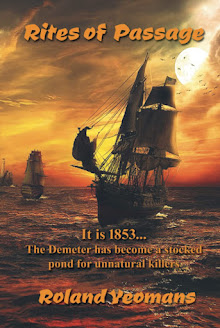
































































































































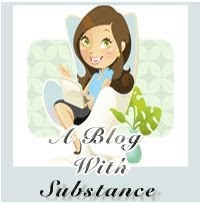



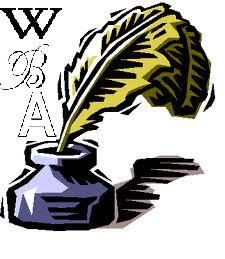
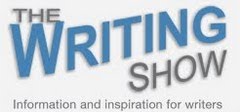


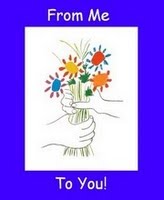

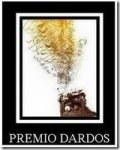

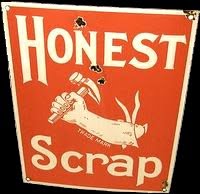

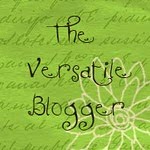
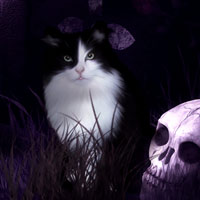
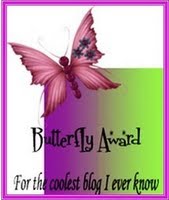



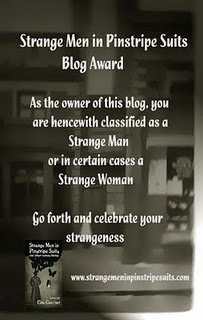
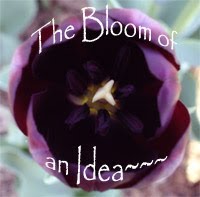

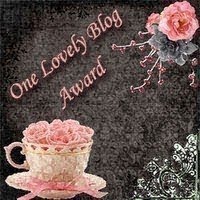

















These may seem like very obscure aspects at first glance but I think these are some very astute observations here Roland!
ReplyDeleteCan't believe you went with John Tesh though, hilarious.
Today's guest blogger is THE Elana Johnson!
Fascinating stuff about the human face. And great pointers!
ReplyDeleteHave a great weekend...
:)
Yes I can see you ......... LOL
ReplyDeleteVery fantastic post :-)
Have a Happy Weekend
:)
:)
thanks for the compliment but you put a lot of effort into your blog too- its full of videos
ReplyDeleteGreat info about the human face and social interactions. I've always thought it interesting that what passed for lipstick was red. Hope you have a great weekend...!
ReplyDeletePretty is good for survival until somone gets envious. I hope they cover how it can be a double-edged sword, big time.
ReplyDeleteThanks for the links. The books look interesting and helpful. Great post and fun photo to go with it.
I feel very inspired by what you said about the hook for a query letter and the wonderful example you gave. In my mind, I wrote the hook for my children's picture book and can't wait to draft that query letter that's been on my mind for some time now. Thank you for your helpful post, Roland!
ReplyDeletewe must read all kinds of material to ensure our characters are fully rounded... great stuff :)
ReplyDeleteThis was SO interesting to me. I have a Master's degree in Psych, so at the beginning, I was nodding, finding it fascinating that people read BOOKS to see what I naturally See--to GET what my natural strength in writing is... then to arrive at the APPLY part and hit the glitch... Someone who sees the world in relationships and character is NOT a person who can summarize a plot in 3 sentences. NOSIREEBOB. I get the WHAT should be done, but DOING IT-yougottabekiddingme?! *snicker* Sorry... it's a fabulous idea. I'm just pointing out that the people with the ONE strength often lack the other, and vice versa. But I will TRY, because it really SHOULD work, if I could just... you know... get the point across concisely (which someone who is expert in the nuances of character and interaction has DEFINITE trouble with)
ReplyDeleteI have got to get a John Tesh CD! Oh boy, do I likey-like. That Vally of Dreams video was simply awesome. I went to his site to listen to more.
ReplyDeleteWell, now I know what to spend my gift certificate on at Amazon. I won Roni's blogfest contest and haven't spent it yet because I can't go to ANY type of bookstore without overspending. And, I'm broke. But I can spend the whole thing on just one book.
One book, Donna, one book. I think I can, I think I can . .
Good advice on the query writing too. I think I've missed Jessica's posts the last couple days. I'll be sure to pop over.
Have a great weekend Roland.
.......dhole
These are such great reviews! I am definitely getting a copy of Survival of the Prettiest. You sold me on that one!
ReplyDeleteI hope you have a great weekend! :)
Hi Roland .. that’s interesting that five groups of people from the ancients to today see the same beauty .. and that red pigment was being used as lip colouring 5,000 years ago .. “Survival of the Prettiest”.
ReplyDeleteThe Eye to Eye, How People Interact – also really interesting .. and thanks for the links .. and your part on Queries is such a good synopsis .. thanks so much .. enjoyed reading this – Hilary